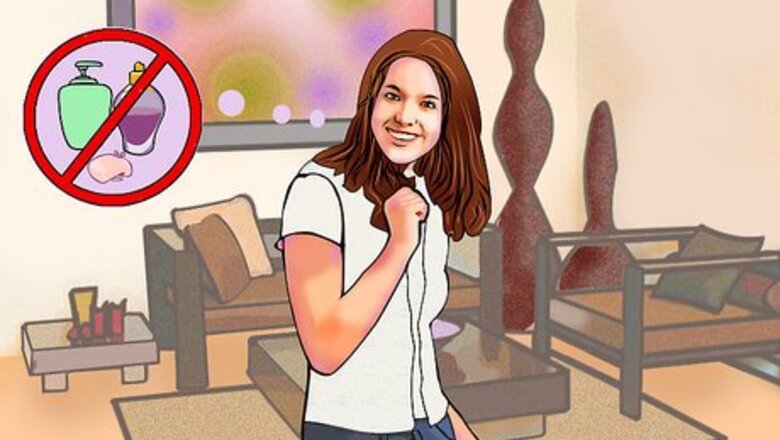
views
Preparing to Go Outdoors
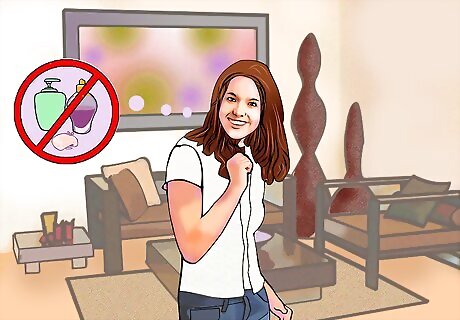
Avoid strong scents. Bees are attracted to or react to odors. Avoid wearing perfumes, colognes, or other heavy scents, or using scented soaps, shampoos, and basically anything that makes you smell nice if you're going anywhere near a hive or wasps nest.
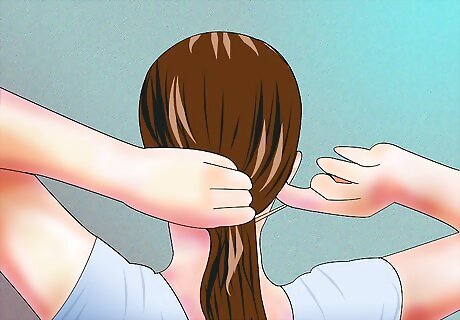
Tie your hair back. Bees may become trapped in loose or long hair. If you tie your hair back, however, a bee can easily fly away if it lands on your head by mistake.

Avoid bright, patterned, and black clothing. Brightly colored or patterned clothing (especially floral prints) may attract bees. On the other hand, they may also be attracted to very dark clothing, so avoid wearing black. Instead, choose khaki, beige, or blue colors.

Wear tight, protective clothing, especially if you know bees will be around. Long pants and a long-sleeved shirt can protect you from getting stung if bees are nearby or known to live in an area you will visit. If bees are present, they can get caught between loose clothing and your skin. Snug-fitting clothing will keep bees out and prevent stings. If you have to work around bees, wear a beekeeper’s hat or a mesh covering over your head, and tuck your pants into your shoes or socks. You can also wrap tape snugly around the angles of your pants and the ends of your sleeves to keep bees from flying up your clothing.
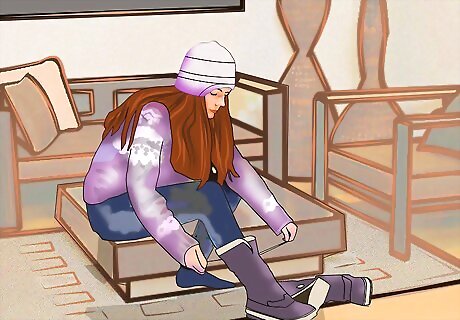
Wear close-toed shoes. Good footwear will protect your feet when you are outdoors. Bees will hover in and around low ground cover like clover, so it is especially important to wear close-toed shoes if you will be near such an area.

Know the risks of pesticides. Applying insect repellents or bug sprays to your skin or clothing will not keep bees away. If you want to use a pesticide or repellant anyway, remember that they can be hazardous to your health and to the environment. Always follow usage directions exactly.
Avoiding Bees
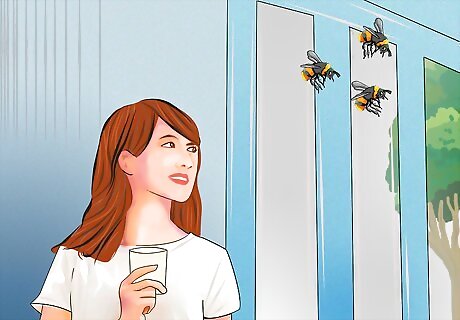
Be observant when drinking sweet beverages outside. Sugary drinks are similar to nectar and may attract bees. You will want to choose the right drinking vessel. Bees can enter small-mouth cans and bottles without you realizing it, increasing your chances of getting stung. Using a wide-mouth cup makes it easier to see if a bee has landed in your drink. A lid and/or straw can also help keep bees out of your drink.
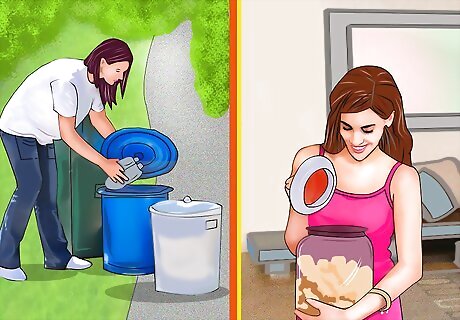
Keep food and trash covered. Bees might be attracted to the scent of food and trash, so keep these covered if you are outdoors. Keep trash in containers with tight-fitting lids. Use dishes with lids to cover your food if you are eating outdoors.
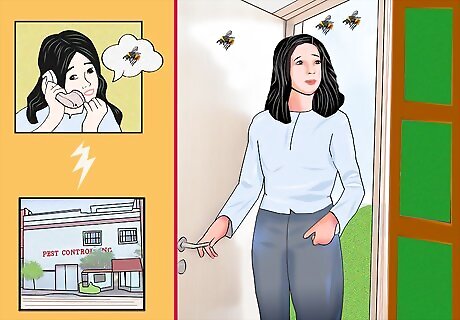
Stay away from beehives. Your chances of getting stung are higher if you are near a hive, since bees will be protective of it. If you see a hive, leave the area. Don’t touch or poke it. If you see lots of bees flying to and/or from the same place, or hear lots of buzzing, chances are there is a hive nearby, and you should move to another area. If you see a hive in, on, or near your home, contact a professional pest control service to have it safely removed.
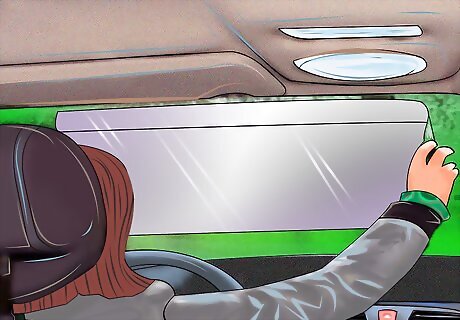
Keep car windows rolled up. Bees may fly into your car if the windows are down. If a bee is already inside your car, stop, roll down the windows, and wait for it to fly out.
Dealing with Bees
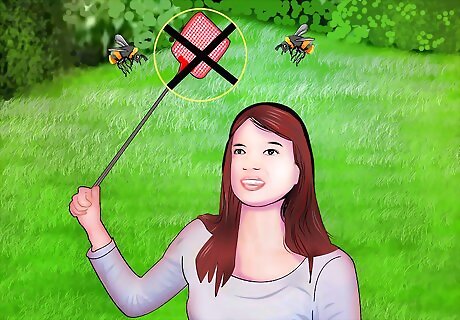
Don’t swat at bees. Slapping, waving, and swatting at bees with your hand or an object may irritate them and increase the possibility that you will be stung. EXPERT TIP David Williams David Williams Beekeeper & Bee Removal Specialist David Williams is a Professional Beekeeper and Bee Removal Specialist with over 28 years of beekeeping experience. He is the Owner of Bzz Bee Removal, a bee removal company based in the San Francisco Bay Area. Bzz Bee Removal locates, captures, and transports bees to local beekeepers to prevent colony collapse disorder. David Williams David Williams Beekeeper & Bee Removal Specialist Our Expert Agrees: If you see a bee, don't swat at it. Simply move out of the way and walk away from it. Sometimes they can be aggressive, but just continue walking to put distance between you and the insect.

Stay calm if a bee lands on you. If a bee lands on you, it is probably just investigating an odor (or getting water if you are sweating). Remain calm, wait a moment, and soon it will realize that you are not a flower and fly on. If you do not want to wait, then gently brush the bee off of you with a piece of paper, or blow gently at it to encourage it to move on.
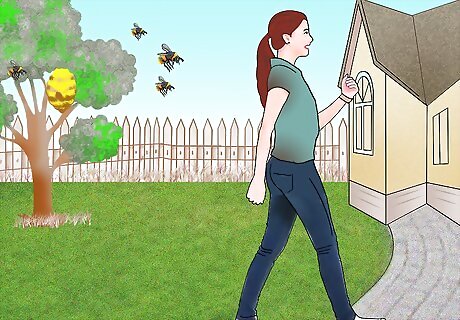
Leave the area immediately if you see lots of bees. Bees sometimes swarm. If you see many bees together, or if a swarm flies near you, cover your mouth with your hand or a cloth and quickly but calmly get away. Swatting at bees is a bad idea, because it may aggravate them and increase your chances of being stung. However, you should also not “freeze” in place if you see bees, since that would make them fly to you. Don’t try to get away from bees by hiding in a pool, pond, lake, etc. They may just wait for you to resurface.
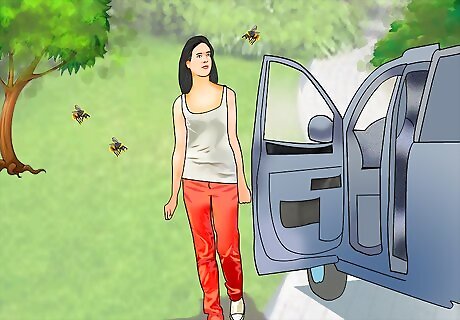
Leave the area immediately if you are stung. When a bee stings you, it releases a chemical that may attract other bees. Get away and seek shelter indoors or in a car.
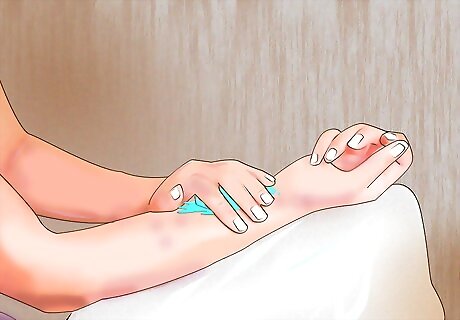
Care for the wound if you are stung. Most people will have only a mild reaction to a bee sting, with some swelling and minor pain. Putting ice on a sting can reduce swelling and irritation. Honey bees (unlike bumblebees, wasps and hornets) will leave their stinger in your skin after they sting you. To remove it, gently scrape your fingernail across it. Don’t try to squeeze or pinch it out, as this can just drive the stinger deeper into your skin.
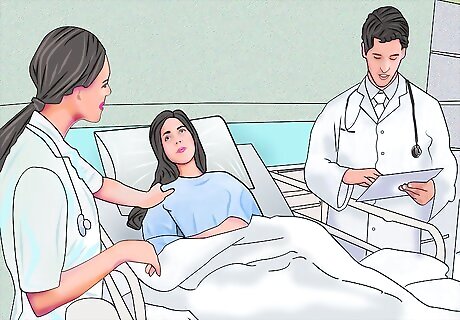
Seek medical attention if the attack was severe. If you are stung many, many times, or if you are stung and know that you are allergic to bee stings, you should seek medical assistance as soon as possible to make sure that you are alright. If you see any of the following symptoms, you may be having a severe (potentially life-threatening) allergic reaction (anaphylaxis) to bee stings and someone should help you get medical assistance immediately: Hives, itching, pale or flushed skin Difficulty breathing Swelling of your throat and/or tongue A weak or rapid pulse Nausea, vomiting, or diarrhea Dizziness or fainting Loss of consciousness













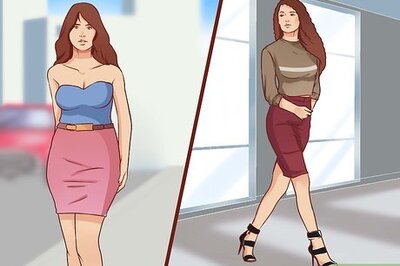






Comments
0 comment